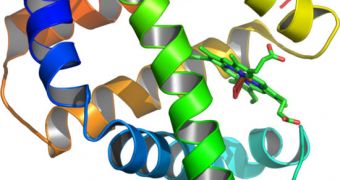In a study with far-reaching implications for the field of biomedical research, scientists at the Rice University developed a new, synthetic enzyme. The molecule, which relies on a rare metallic chemical seldom used in nature, is capable of binding to, and identifying, numerous proteins, including some of those that have until now guarded their secrets closely. Some of these proteins include agents that play an important role in the development of tumors in cancer, as well as in other potentially fatal diseases.
According to the investigators, thousands of currently-difficult-to-study proteins could be identified using the new marker. “We have combined the chemical capabilities of rhodium with what biology already knows about recognizing and selecting specific proteins. The result is a tool that, in many ways, is more powerful than any biological or chemical approach alone,” explains Rice assistant professor of chemistry Zachary Ball. He is also the coauthor of a new paper detailing the findings, which appears in the latest online issue of the Journal of the American Chemical Society (JACS).
The expert has been working in this field for a long time, though his work did not initially revolve around designing enzymes. But, while investigating the properties of dirhodium catalysts some three years ago, he noticed that the chemical could modify tryptophan. This is one of the essential 21 amino-acids that set the foundation of life on our planet. All proteins, RNA and DNA are made of the same 21 chemicals, arranged in various patterns.
“Signaling pathways are like a trail of dominos. Dozens of proteins can be involved, and they interact one after the other in a cascade. In most cases, the interactions are both fleeting and weak. They are difficult to observe with traditional methods, and as a result we are still in the dark about the roles that key signaling proteins play in health and disease,” Ball explains of the investigative potential of the new enzyme. The molecule was obtained by “marrying” the rhodium-based catalyst with the selectivity of enzymatic reactions. Enzymes are well known for only locking to specific molecules, which match their shape perfectly.

 14 DAY TRIAL //
14 DAY TRIAL //